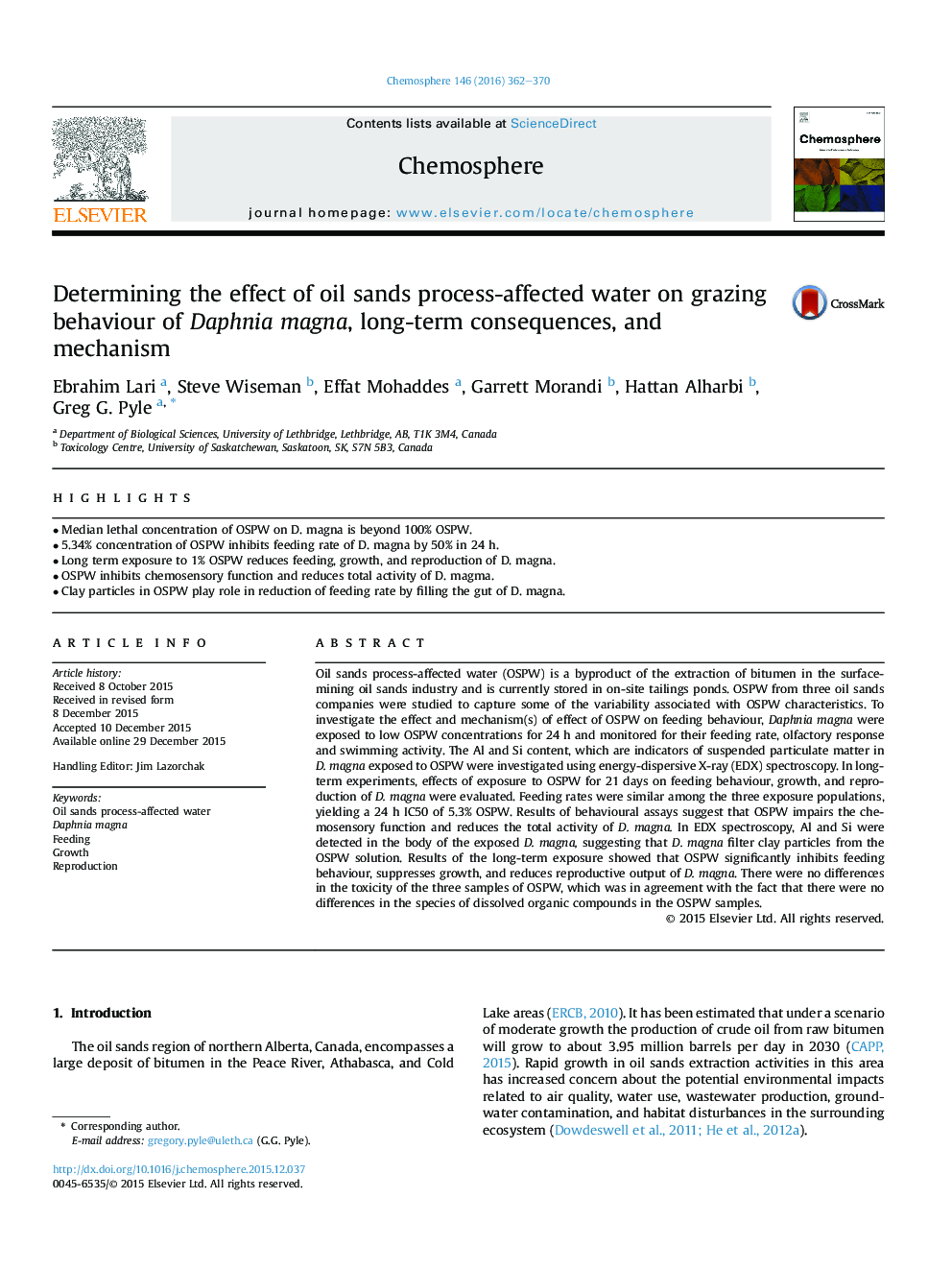| کد مقاله | کد نشریه | سال انتشار | مقاله انگلیسی | نسخه تمام متن |
|---|---|---|---|---|
| 4407961 | 1618825 | 2016 | 9 صفحه PDF | دانلود رایگان |

• Median lethal concentration of OSPW on D. magna is beyond 100% OSPW.
• 5.34% concentration of OSPW inhibits feeding rate of D. magna by 50% in 24 h.
• Long term exposure to 1% OSPW reduces feeding, growth, and reproduction of D. magna.
• OSPW inhibits chemosensory function and reduces total activity of D. magma.
• Clay particles in OSPW play role in reduction of feeding rate by filling the gut of D. magna.
Oil sands process-affected water (OSPW) is a byproduct of the extraction of bitumen in the surface-mining oil sands industry and is currently stored in on-site tailings ponds. OSPW from three oil sands companies were studied to capture some of the variability associated with OSPW characteristics. To investigate the effect and mechanism(s) of effect of OSPW on feeding behaviour, Daphnia magna were exposed to low OSPW concentrations for 24 h and monitored for their feeding rate, olfactory response and swimming activity. The Al and Si content, which are indicators of suspended particulate matter in D. magna exposed to OSPW were investigated using energy-dispersive X-ray (EDX) spectroscopy. In long-term experiments, effects of exposure to OSPW for 21 days on feeding behaviour, growth, and reproduction of D. magna were evaluated. Feeding rates were similar among the three exposure populations, yielding a 24 h IC50 of 5.3% OSPW. Results of behavioural assays suggest that OSPW impairs the chemosensory function and reduces the total activity of D. magna. In EDX spectroscopy, Al and Si were detected in the body of the exposed D. magna, suggesting that D. magna filter clay particles from the OSPW solution. Results of the long-term exposure showed that OSPW significantly inhibits feeding behaviour, suppresses growth, and reduces reproductive output of D. magna. There were no differences in the toxicity of the three samples of OSPW, which was in agreement with the fact that there were no differences in the species of dissolved organic compounds in the OSPW samples.
Journal: Chemosphere - Volume 146, March 2016, Pages 362–370